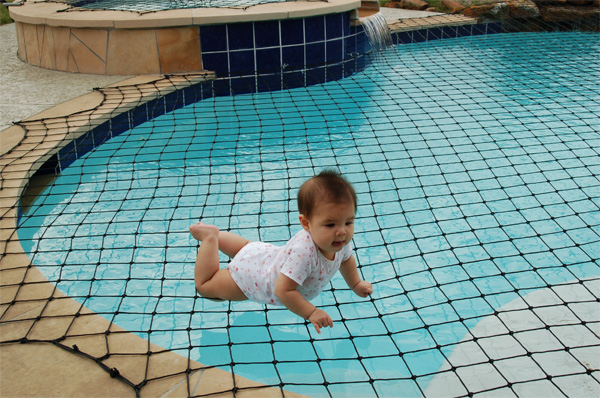It’s not uncommon to see pool safety covers topping pools as pool season winds down towards Fall and into the Winter. These covers are valuable as they help maintain the pool and keep children and unsuspecting pets or other animals out of a partially or completely emptied pool. So while it’s practical for pool owners, it may be even more necessary for unoccupied houses as well.

Over the past five years foreclosures have boomed across the country, and there’s no shortage of foreclosed homes with pools. As the number of foreclosures grew, it became apparent that empty pools were a serious risk and an undeniable liability for banks, former homeowner or the insurer. While safety covers aren’t cheap, without question, all of the previously mentioned parties are better off spending a few hundred dollars and stopping a potential tragedy as well as a lawsuit.
So what is a safety cover exactly?
Safety covers create a firm cover that can support a substantial amount of weight. Pool safety covers typically come in two varieties, mesh and solid. Mesh safety covers are very lightweight but obviously permeable. They keep most of the debris out of a pool, but some smaller particles will go through and you’ll need to clean the pool in the Spring. Since water seeps through, your water level will generally stay high, but sunlight will cause your chlorine to evaporate so don’t expect much in the way of chlorine when you open your pool.
Solid safety covers completely cover your pool and create an impenetrable barrier. Solid covers block out light, helping you save chlorine and stopping the growth of algae and other organisms that need sunlight. Since water doesn’t pass through, solid covers do need to be pumped throughout the offseason as water will collect and possibly damage the pool or create a hazardous surface for an in ground pool.
Why winter covers aren’t enough
Another common sight in the Fall and Winter are winter covers. Winter covers are probably more common for occupied homes, as the homeowners can keep an eye on their property. The problem with winter covers is that they are loosely attached and don’t support weight. In fact, if a person or a pet falls through a winter cover, they can become entangled in it and it can lead to an even greater likelihood of drowning. Further, a proper safety cover comes with an anchoring system which will hold the cover firmly in place.
While manufacturers like Loop-Loc’s use of an elephant standing on a safety cover may be a bit of a stretch, a safety cover’s ability to withstand the weight of a child, pet or even an adult makes it a must for a foreclosed home. For in ground pools, a safety cover can also cover up deteriorating edges of unkept pools which can also help deter accidents.
For a family with children a safety cover is usually a no brainer. Parents aren’t alone in their need for a safety cover any longer, though, as anyone with potential liability on a foreclosed home should take steps to make sure they have a functioning safety cover for their pool.
The author is a contributor to Swimtown Pools, a leading online pool supply store carrying pool chemicals, pool heaters, pool pumps, pool safety covers, lighting, pool cleaners and more.

